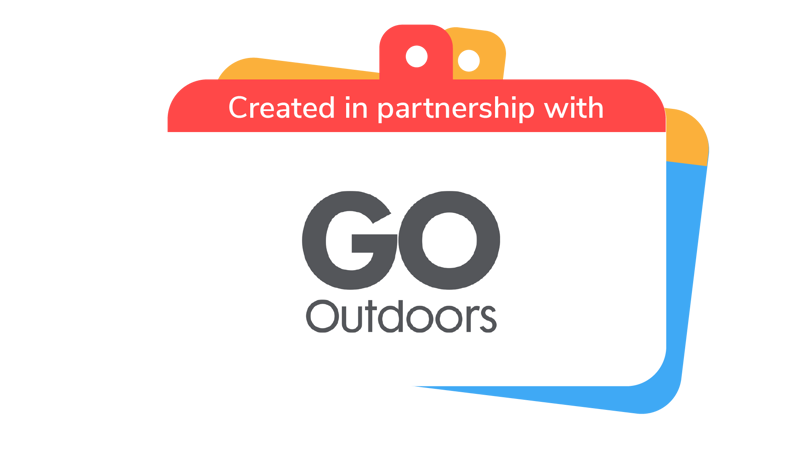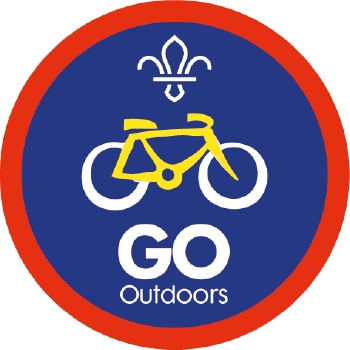
GPS arty adventures
You’ll need
- Pens or pencils
- A4 paper
- Maps
- Bikes (or alternative mode of transport)
Before you begin
- Use the safety checklist to help you plan and risk assess your activity. Additional help to carry out your risk assessment, including examples can be found here. Don’t forget to make sure all young people and adults involved in the activity know how to take part safely.
- Make sure you’ll have enough adult helpers. You may need some parents and carers to help out if you’re short on helpers.
- Make sure you are familiar with our guidance around cycling.
- Choose the area that everyone will be travelling within, ensuring it’s appropriate and safe.
- Make sure that you have organised the bikes in advance and completed an M check. This could mean asking everyone to bring their bikes with them to the meeting. It could mean organising bike rentals. Alternatively, you can run this activity by using a different mode of transport, such as hiking, skateboarding or paddling. Remember to include safety equipment, such as helmets, pads and stabilisers.
GPS art
GPS art’s a method of drawing using a Global Positioning System device. You follow a pre-planned route to create a large-scale picture. The artwork itself dictates the length of the ride, and adds a unique challenge to route planning. You could also walk the route, too, instead of using a bike.
Plan your route
- Split everyone into small groups. Distribute maps of the area that they will be cycling in, as well as pencils and paper to each group.
- Assign two adults to each group to help plan the journey and join them on the cycle ride. If you have a lower number of available adults or young members, you could do this activity as one big group.
- As a whole group or in small groups, decide on the image you’re going make. You could consider dividing parts of a long route into chunks and dividing it between teams. This means that everyone just has to focus on their one piece of the ‘jigsaw’.
- Some groups may want to consider the map as a canvas and locate natural features that resemble shapes to craft a full image. Others may have a specific image in mind and try to trace that image, or a close approximation of it, to follow accessible paths and roads.
This could be something Scouts related, such as the Scouts salute, the Fleur de Lis or a campfire, or you could spell out your troops name.
- Using their image in mind, each group should plan their route. Check out the activity ‘Mapping your adventure’ for more guidance and the ways to record and plan your journey section below.
- An adult should thoroughly check the route by to ensure it’s safe before heading out. Check out our guidance on cycling and safe routes. You’ll need to consider how this interacts with busy roads and if the cyclists have enough experience and endurance to complete it safely.
Remember to check the length of the journey to ensure that it’s achievable and safe, too.
- Remind everyone to be considerate when cycling. Distribute or read the mountain biking code of conduct. This’ll remind everyone to stick to their designated paths, rather than take shortcuts, to be considerate of other people and animals. They also need to leave no trace by taking litter home.
You could consider running our activity on ‘Considerate cycling’.
- Get on your bikes and ride!
Make sure each group has at least 2 adults, and check everyone has their helmets and safety equipment. Everyone could take something to eat and drink for their journey.
There are a number of different GPS trackers available. We’ve included some suggestions below. If you don’t have access to these resources, you can simply draw your route on top of a map instead.
- RunGo is an app that assists in route planning, as well as having a library of past routes that you can draw inspiration from. Remember that this aimed specifically at runners, so any route that you choose must be safe and appropriate for your mode of transport and level of skill.
- Strava is an app designed for both runners and cyclists. It assists you in planning and then tracking journeys, as well as having a library of routes to draw inspiration from.
- Use an OS map and a map pen and draw your route onto it.
Reflection
Creating GPS art’s a great way for people to stay active, develop their skills further, have fun, and enjoy new and exciting environments. Of course, valuing the time we spend outdoors goes beyond appreciating the beauty around us. It’s our responsibility to prepare ourselves for the risks that come with changing terrain.
In your off-road adventure, everyone needed to keep looking around for potential hazards and adapt to the conditions. This ability to be alert and respond quickly to changing situations is something that comes up a lot in other places, such as when you’re running a business or having a job interview.
Can your group think of other examples of times when keeping a cool head and having quick reactions can be particularly useful?
When planning your big adventure, reducing the human impact of your activities should be at the forefront of your thinking. The less you leave behind at your location, the more others can get out of it in the future.
What extra steps could you take to be more responsible with waste, where you walk or cycle and how you get to the start and back from the finish point? We all need to try to leave the world a little better than you found it.
Safety
All activities must be safely managed. You must complete a thorough risk assessment and take appropriate steps to reduce risk. Use the safety checklist to help you plan and risk assess your activity. Always get approval for the activity, and have suitable supervision and an InTouch process.
- Cycle and wheeled activities
Use appropriate protective equipment. You must wear helmets. Wear elbow and knee pads as defined by your risk assessment.
- Adventure
This activity has specific rules and systems to make sure it’s managed safely. Take a look at adventure activities for more guidance.
- Road safety
Manage groups carefully when near or on roads. Consider adult supervision and additional equipment (such as lights and high visibility clothing) in your risk assessment.
- Visits away from your meeting place
Complete a thorough risk assessment and include hazards, such as roads, woodland, plants, animals, and bodies of water (for example, rivers, ponds, lakes, and seas). You’ll probably need more adult helpers than usual. Your risk assessment should include how many adults you need. The young people to adult ratios are a minimum requirement. When you do your risk assessment, you might decide that you need more adults than the ratio specifies. Think about extra equipment that you may need to take with you, such as high visibility clothing, a first aid kit, water, and waterproofs. Throughout the activity, watch out for changes in the weather and do regular headcounts.
Bikes aren’t required to make GPS art. You can plan this activity to be done on foot, on horseback, on skateboards or scooters, or any mode of transport you like.
You may want to decide on the route in advance. This’ll mean that everyone can ride in convoy, which may help with the number of adults needed, too. You’ll achieve the same image together rather than individual images.
Consider dividing parts of a long route into chunks and dividing it between teams. This means that everyone just has to focus on their one piece of the ‘jigsaw’.
The routes don’t need to be competed in one go – you may want to run this across multiple sessions.
Check the length and elevation of each route to ensure it's accessible for the group.
Not everyone needs to use the same mode of transport. They can complete their journey however they feel most comfortable and confident.
All Scout activities should be inclusive and accessible.
You could make it part of a sponsored cycle to raise money for a local charity or for your group. Use this activity to help achieve the Scouts cyclist activity badge.
Speak to your young people before running this session and see what ideas they may have. They might want to go to a specific area, or have a specific cause in mind to turn it into a charity sponsored event.
